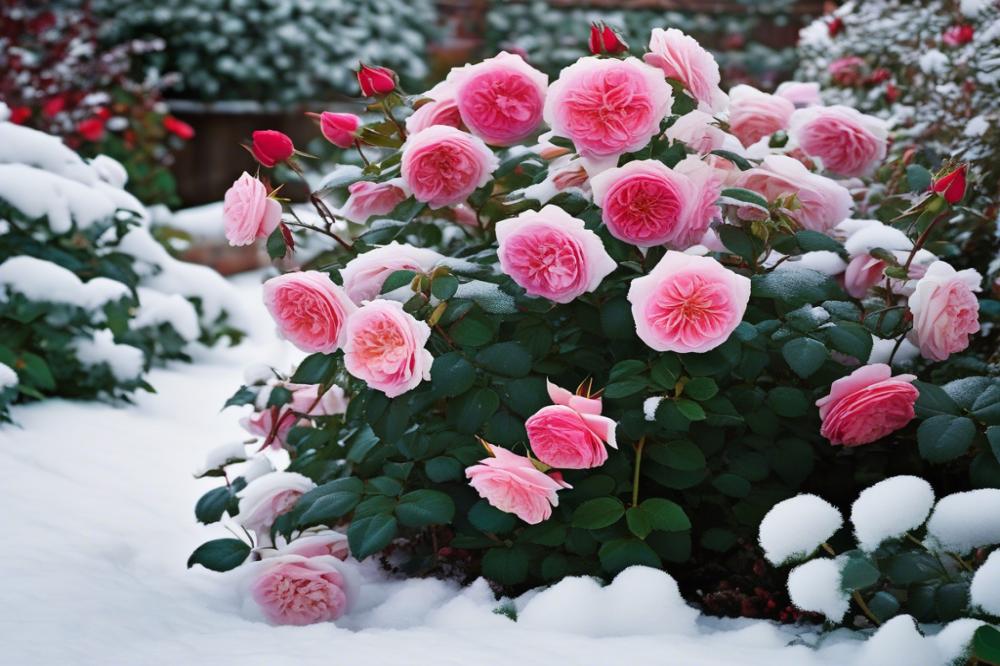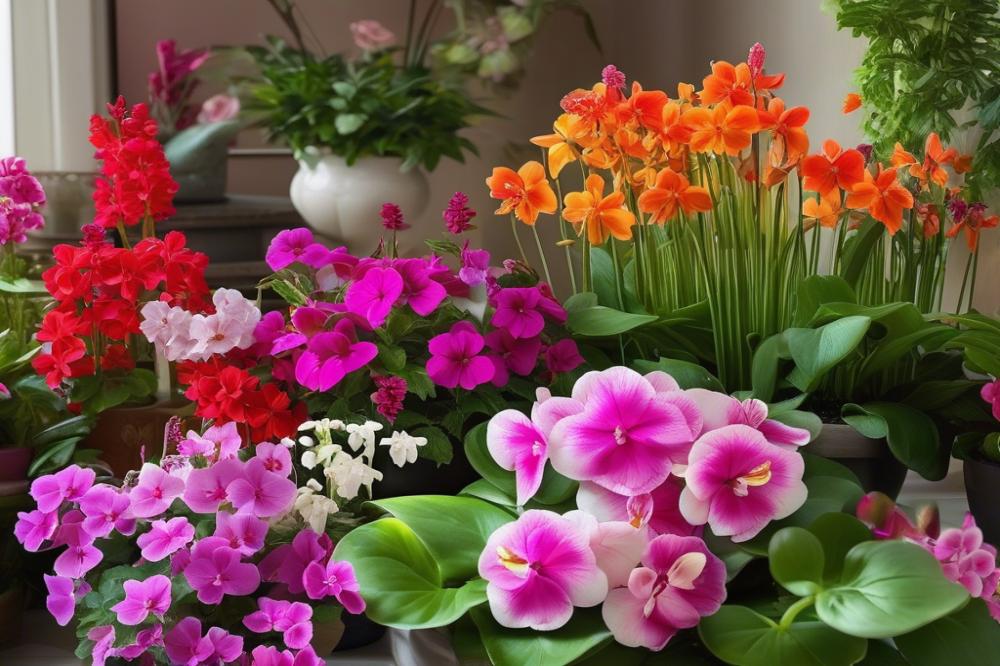Importance of Selecting hardy roses for cold climates
Roses symbolize beauty and grace, but not all varieties can endure the challenges of cold climates. A well-chosen rose can transform any garden into a vibrant display, even in harsh conditions. Cold hardy roses provide the opportunity to cultivate these beloved flowers in areas where winter can be unforgiving. For gardeners in regions classified as USDA hardiness zones 3 and 4, selecting the right rose varieties is essential for success.
Many are surprised to learn that certain species are not just capable of surviving freezing temperatures but can also thrive and bloom splendidly. Choosing fragrant roses or disease resistant roses can enrich your garden without the constant worry of loss due to inclement weather. Nearly every gardener dreams of lush, colorful blooms that return year after year, offering a visual feast even in the coldest season.
This article will explore various rose varieties perfect for colder areas as well as practical gardening tips for cultivating them with care. Whether you’re interested in climbing roses to adorn trellises or shrub roses that provide robust hedging, there is a world of possibilities. Learn how to nurture your roses to withstand winter and offer splendor in spring. With the right choices, even frigid gardens can burst with life and fragrance.
Understanding Hardy Roses

Definition of Hardy Roses
Hardy roses are specific types of roses that can thrive in colder climates. They have adapted over time to withstand harsh winters. This makes them an excellent choice for gardeners living in areas with severe weather. If you want beautiful blooms despite freezing temperatures, these plants are your best bet.
Characteristics of cold hardy Roses
cold hardy varieties stand out in many ways. They generally exhibit stronger stems and foliage that resist cold damage. Many of these roses produce lovely flowers, even in late spring. Fragrant roses and colorful blooms add to their allure. More importantly, certain breeds are also disease resistant. This means you can enjoy gardening without worrying too much about pests or illnesses ruining your hard work.
Growing Zones and Their Significance
Understanding growing zones is crucial for successful gardening. The United States Department of Agriculture (USDA) divides the country into zones based on average winter temperatures. Zone 3 roses, for instance, can survive temperatures as low as -40°F. Similarly, zone 4 roses can handle temperatures down to -30°F. Knowing your zone helps you select the right plants. It’s essential if you want to make effective choices.
For those in colder regions, selecting winter roses is key. Climbing roses and shrub roses thrive in specific zones and provide a unique landscape aesthetic. Keep in mind that certain varieties work better in your particular area. By choosing wisely, you maximize your chances for vibrant blooms and health. Gardening tips can guide you in caring for your roses, so always look for reliable advice.
Top Cold Hardy Rose Varieties

Choosing the right rose varieties for cold climates is essential for any gardener. Certain roses thrive even in the harshest winters. These plants not only withstand frigid temperatures but also bring beauty to your garden. Understanding the options can help you select the best types suited for your zone.
Overview of Rose Varieties Suitable for Cold Climates
Many cold hardy roses flourish in USDA Zones 3 and 4. The plants in these zones can endure extreme cold, making them perfect for northern gardens. When selecting, consider the specific requirements like sunlight and soil type. Climbing roses, shrub roses, and hybrid teas all have varieties that resist cold, adding diversity to your garden.
Detailed Descriptions of Zone 3 Roses
Zone 3 roses can survive temperatures as low as -40 degrees F. One standout is the ‘Pardon My Dark Pink’ rose. This hardy variety features beautiful blooms and dense foliage, thriving in colder regions. Another excellent option is the ‘Carefree Beauty’ rose, known for its stunning pink flowers. It also boasts a robust nature, making it a favorite among many gardeners.
The ‘John Cabot’ rose is another zone 3 champion. As a climbing rose, it can create stunning vertical displays. Its rich, fragrant blooms will enhance any garden space. Further down the list is the ‘Explorer Series’, which includes several varieties that excel in harsh winters. These roses are not only hardy but also offer exceptional resistance to common diseases.
Detailed Descriptions of Zone 4 Roses
Zone 4 roses are also resilient, facing temperatures down to -30 degrees F. The ‘Morden Sunrise’ rose stands out with its vibrant yellow blooms. This variety is appreciated for both its beauty and cold tolerance. Similarly, the ‘Cuthbert Grant’ offers striking red flowers, providing a beautiful contrast in any landscape.
Consider the ‘Winter Sunset’ as well. This shrub rose produces colorful foliage and blooms throughout the season. Moreover, the ‘Knock Out’ series includes roses that thrive in these conditions. Their low maintenance and colorful displays make them a popular choice.
Highlights of Popular Fragrant Roses and Their Hardiness
For those who cherish scent, some varieties shine in cold climates. The ‘Double Delight’ rose features a captivating fragrance paired with vibrant colors. This hybrid tea rose not only performs well but will also delight your senses. ‘Fragrant Cloud’ is another attractive option, known for its lush blooms and strong aroma.
Gardeners might also enjoy ‘Monsieur Hilling Rose’. This variety survives hard freezes and boasts sweet, spicy scents. Many consider fragrant roses a numismatic testament to garden beauty, huge interest in them exists. Even in winter, these lovely plants add character to any outdoor space.
Overview of Disease Resistant Roses for Cold Climates
Disease resistant roses are crucial, especially in harsh climates. Choosing these varieties reduces the need for pesticides and chemicals. Look at the ‘Knock Out’ series again, which is renowned for its disease resistance along with its hardiness. ‘Fairy Tale’ roses also refuse to succumb easily to diseases and pests.
The ‘William Baffin’ climbing rose deserves attention as well. Alongside being visually striking, this variety withstands cold and resists various diseases. Finally, don’t overlook the ‘Renee’s Garden Roses’, which are bred for both beauty and resilience. Keeping disease at bay is essential for a thriving garden.
These unique rose varieties not only survive winter but also create a pleasing atmosphere. Gardening tips can help you plan for your specific zone. Selecting the right plants opens the door to an impressive floral display despite the chill in the air.
Climbing and Shrub Roses for Cold Regions

Many gardeners in cold climates often feel limited in their rose selection. However, climbing roses can thrive in these harsher zones, bringing beauty and height to your landscape. These roses not only withstand the chill but can also add a lovely vertical element to your garden.
Recommendations for Resilient Climbing Rose Varieties
Consider a few climbing rose varieties that excel in zones 3 and 4. “William Baffin” is well-known for its disease-resistant qualities and ability to flourish even when temperatures drop. Another fantastic choice is “New Dawn,” which showcases fragrant blooms and can tolerate cold winters exceptionally well. For a unique flair, try “John Cabot,” a hardy variety that produces stunning pink flowers and stands strong against tough weather.
Benefits of Shrub Roses in Cold Climates
Don’t overlook shrub roses when thinking about cold hardy options. These tough plants can handle cold winters and often require less maintenance than traditional roses. Many shrub roses are also resistant to diseases, making them an excellent choice for novice gardeners. Their resilience allows them to survive harsh conditions while providing a vibrant display in spring and summer.
List of Hardy Shrub Rose Varieties
When selecting shrub roses for your cold garden, consider these varieties:
- “Pink Drift” – A low-growing option that offers a beautiful bloom.
- “Knock Out” – Famous for its hardiness and continuous flowering throughout the season.
- “Carefree Wonder” – Features bright flowers and impressive disease resistance.
- “Morden Sunrise” – Known for its cheerful yellow blooms that can brighten up any garden.
- “Snow Goose” – A white rose that looks stunning against a winter backdrop.
These options provide not just color, but also fragrance and a sense of resilience. Picking the right varieties helps ensure your garden thrives, even when the winter months arrive.
Gardening Tips for Growing Hardy Roses

Selecting the Right Planting Location
Choosing where to plant your roses is crucial. They thrive best in areas that receive at least six hours of sunlight each day. Look for spots with good air circulation. If possible, select locations that are sheltered from harsh winter winds. Remember, proximity to large trees can create unwanted shade, hindering growth. A well-chosen site not only promotes strong health but encourages abundant blooms.
Essential Soil Requirements and Amendments
Roses prefer well-draining soil with a pH between 6.0 and 6.8. Clay or sandy soil often needs amendments to achieve this balance. Organic matter, such as compost, can improve soil structure and fertility. Adding mulch helps maintain moisture and regulate temperature. Don’t overlook soil drainage; standing water can cause root rot. When planting, mix in fertilizers specifically formulated for rose varieties to promote vibrant growth.
Pruning Techniques for Winter Roses
Effective pruning is essential for thriving winter roses. Start in late winter or early spring before new growth begins. Remove dead, damaged, or crossing branches first. Aim to create a vase shape to allow for good airflow. Zone 3 roses and zone 4 roses benefit from a light prune to encourage new shoots. When cutting, make angled cuts just above healthy buds to guide growth. Regular pruning keeps your plants healthy and rejuvenated.
Winter Care and Protection Methods
Winter protection is key to the survival of fragrant roses in colder climates. Mulching around the base helps insulate roots against freezing and thawing. Using burlap or frost cloth can shield more delicate climbing roses from harsh elements. During extreme cold snaps, consider wrapping the bushes for added warmth. Avoid over-watering in winter, as this can lead to root issues. Checking on the plants throughout winter allows you to respond to their needs promptly.
Bringing Beauty to Cold Climates
Choosing the right roses for your garden is essential, especially in colder regions. Selecting hardy types can make all the difference. These plants stand up to harsh winters and thrive, offering vibrant blooms to brighten your outdoor space. They not only add beauty but also resilience to your gardening efforts.
The world of cold hardy roses is vast and fascinating. Exploring various rose varieties allows gardeners to find the perfect fit for their specific climate and personal aesthetics. With a bit of research, you can uncover stunning options that match your vision.
Consider the satisfaction that comes from nurturing these tough blooms. Gardening can be a rewarding endeavor, and cultivating roses that flourish despite challenging weather showcases both effort and heart. These plants remind us that beauty can endure and thrive, even in the harshest conditions.
Embrace the journey into rose gardening. You have the power to create an inspiring outdoor haven filled with these remarkable flowers. Let your garden reflect your personality while honoring the elements. With each bloom, you’ll witness the strength and elegance that come from nurturing the environment around you.



